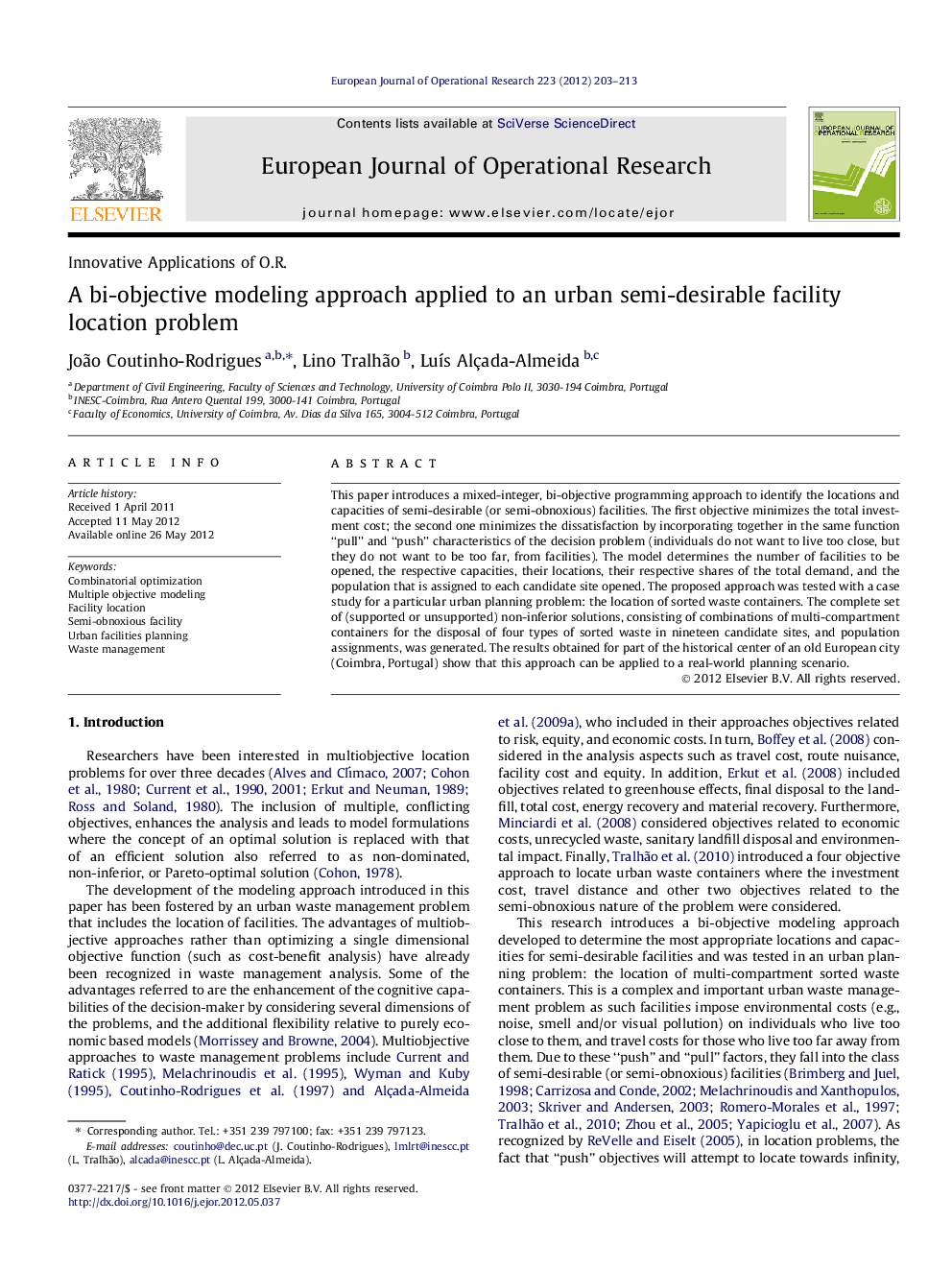| Article ID | Journal | Published Year | Pages | File Type |
|---|---|---|---|---|
| 478359 | European Journal of Operational Research | 2012 | 11 Pages |
This paper introduces a mixed-integer, bi-objective programming approach to identify the locations and capacities of semi-desirable (or semi-obnoxious) facilities. The first objective minimizes the total investment cost; the second one minimizes the dissatisfaction by incorporating together in the same function “pull” and “push” characteristics of the decision problem (individuals do not want to live too close, but they do not want to be too far, from facilities). The model determines the number of facilities to be opened, the respective capacities, their locations, their respective shares of the total demand, and the population that is assigned to each candidate site opened. The proposed approach was tested with a case study for a particular urban planning problem: the location of sorted waste containers. The complete set of (supported or unsupported) non-inferior solutions, consisting of combinations of multi-compartment containers for the disposal of four types of sorted waste in nineteen candidate sites, and population assignments, was generated. The results obtained for part of the historical center of an old European city (Coimbra, Portugal) show that this approach can be applied to a real-world planning scenario.
► We introduce a mixed-integer bi-objective programming approach in a location problem. ► Investment costs and dissatisfaction related to semi-desirable facilities are modeled. ► “Pull” and “push” factors are considered together in a dissatisfaction function. ► The location of multi-compartment containers for sorted urban waste was tested. ► Results were obtained for part of the historical center of an old European city.
